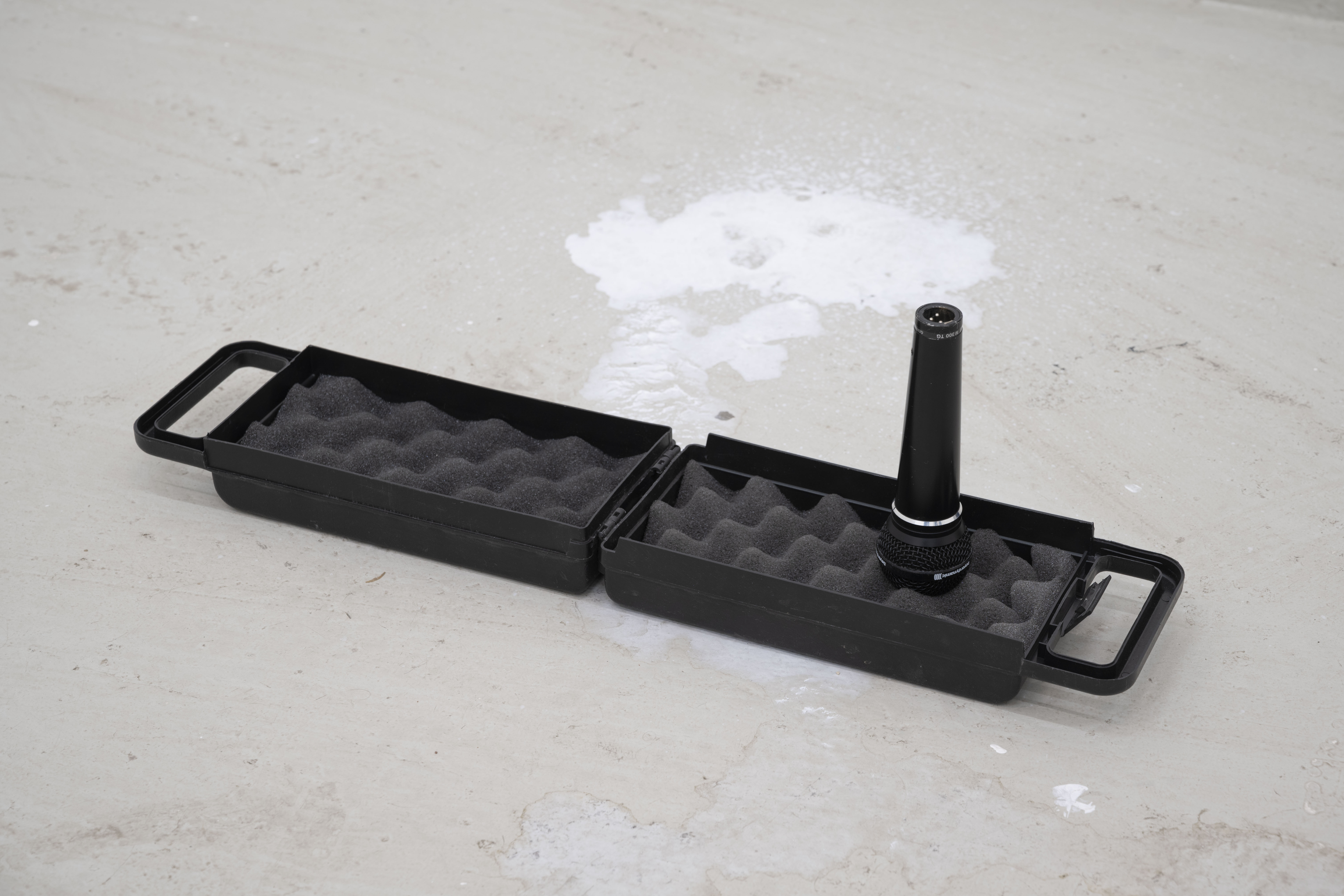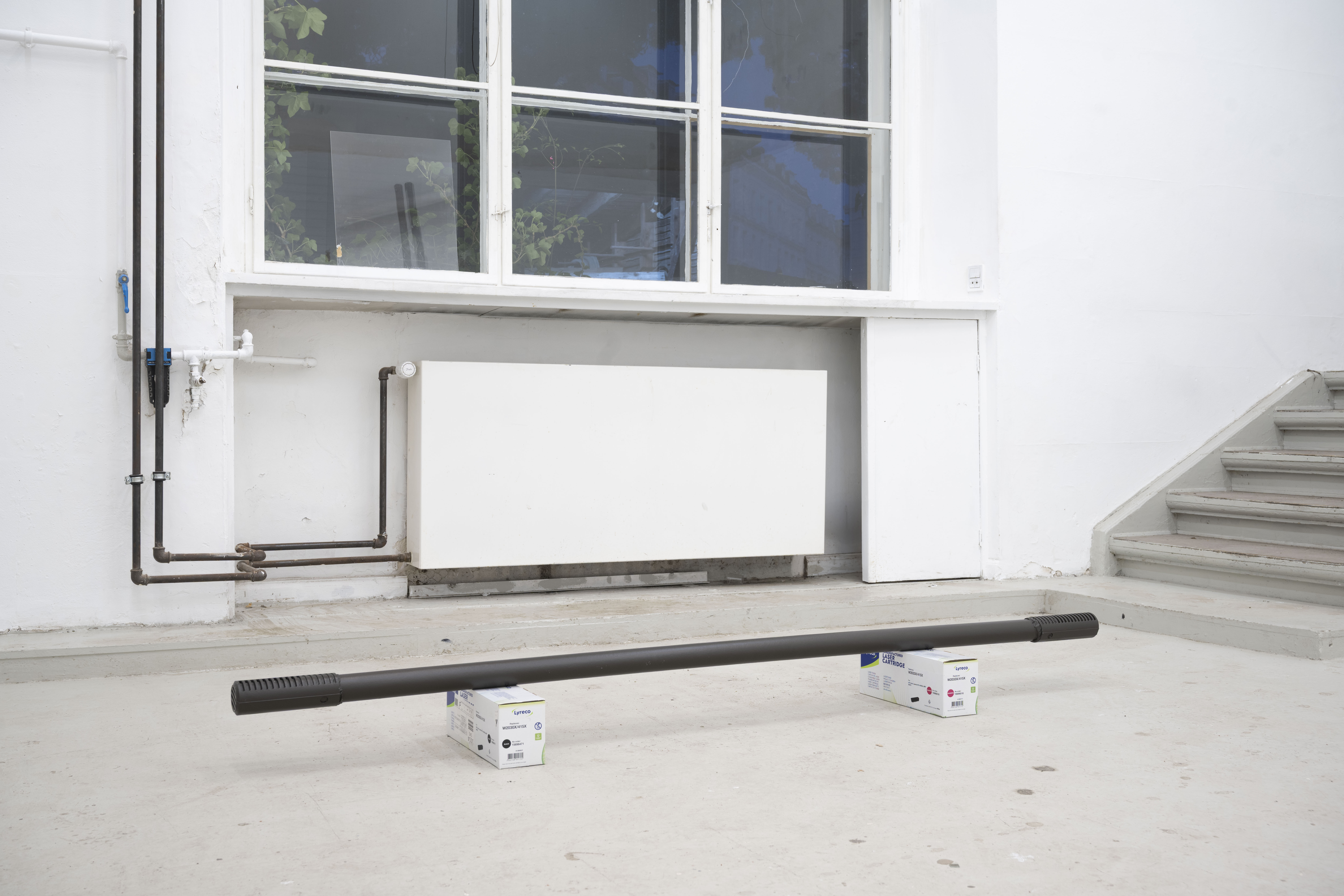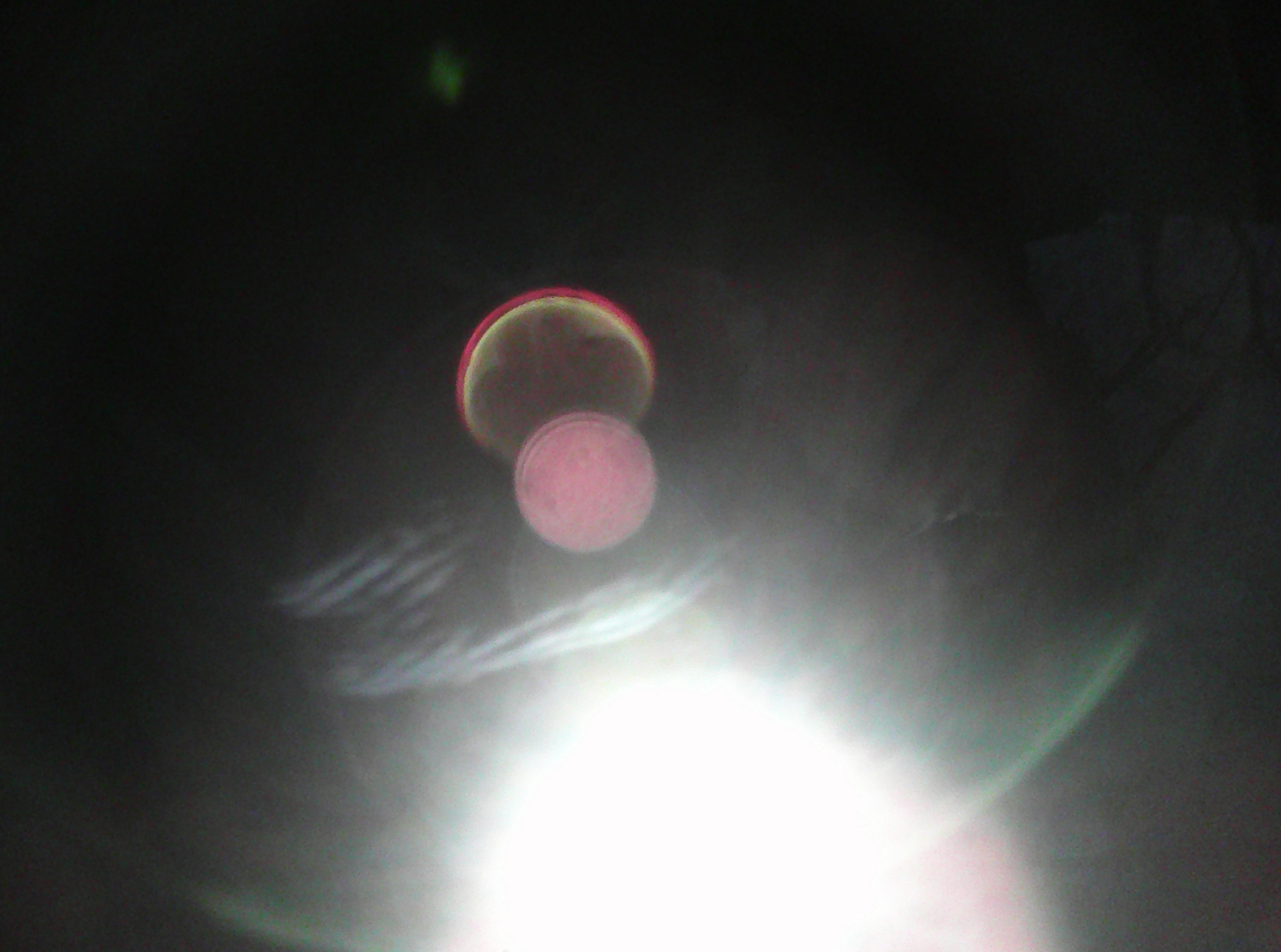Luis Maria Sulzmann
at the Royal Danish Academy of Fine Arts
Kongens Nytorv 1
02 October - 05 October 2025
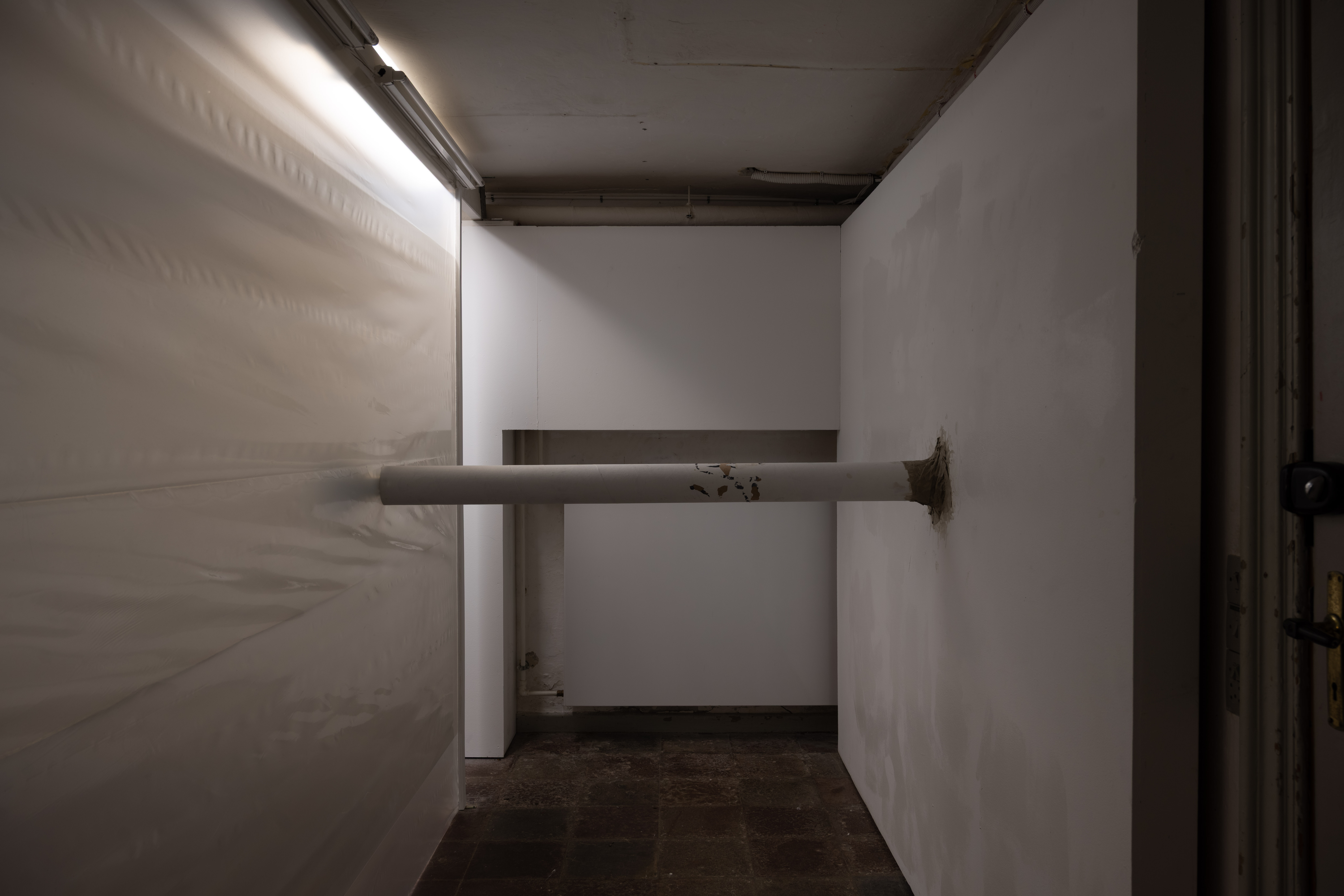
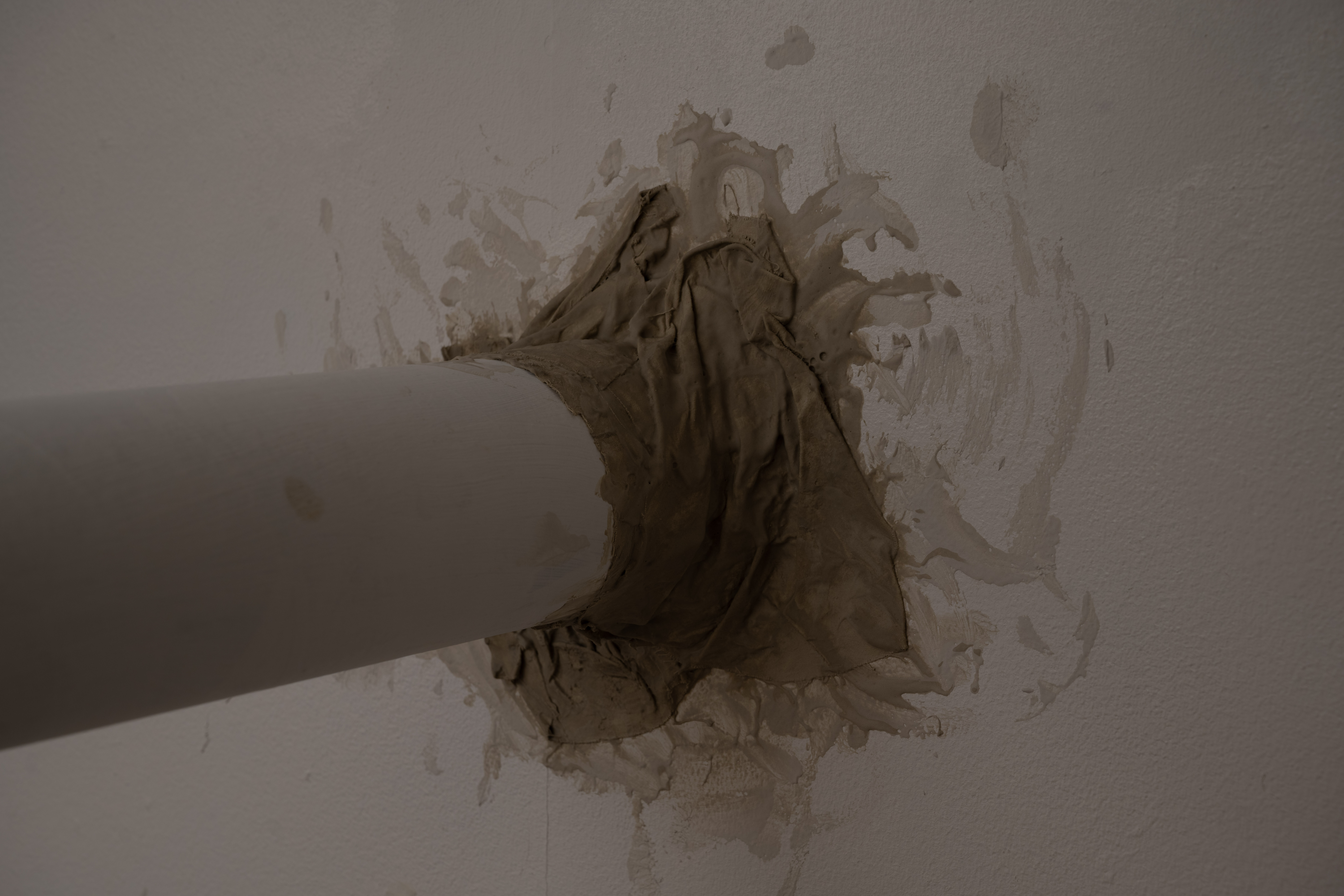
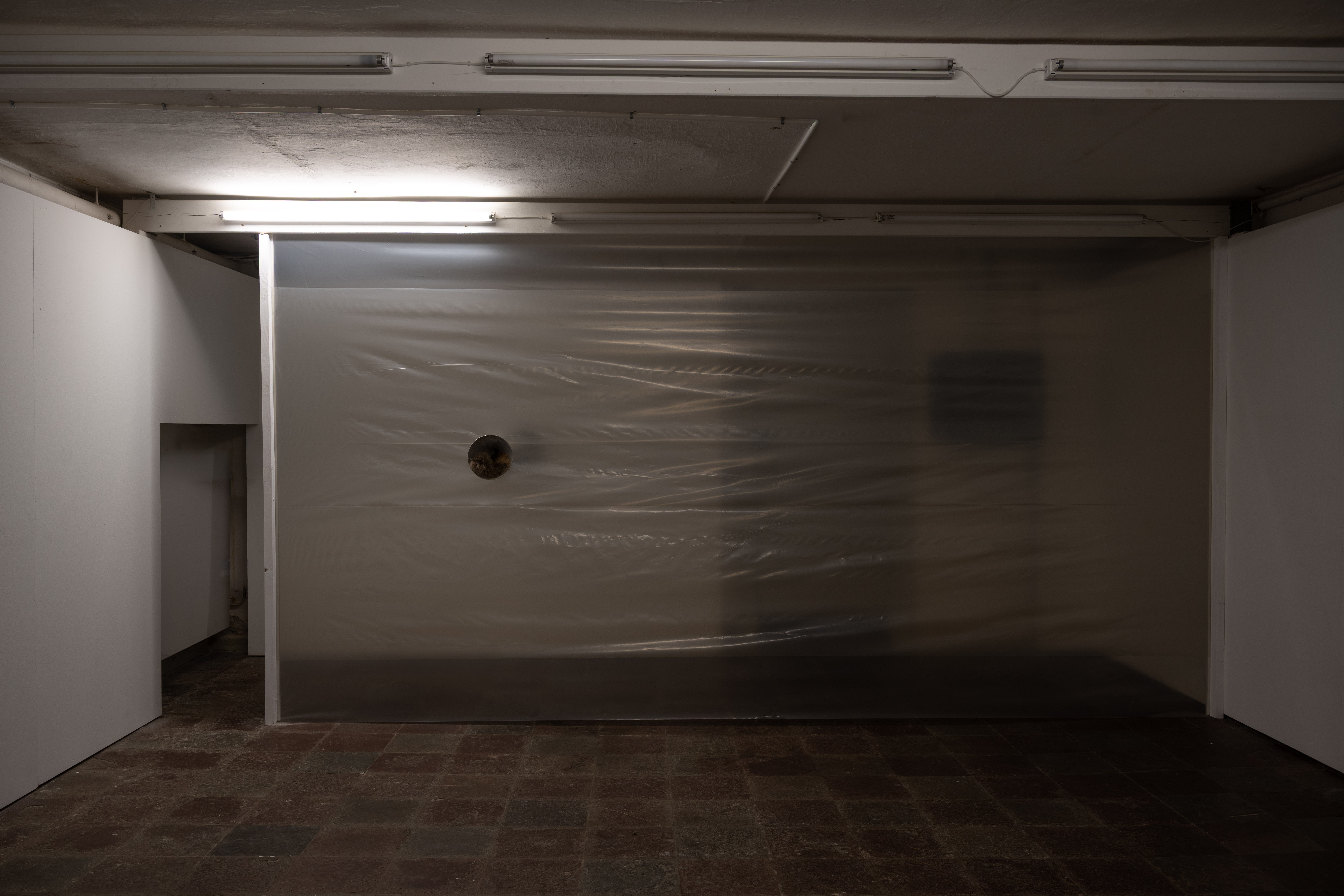
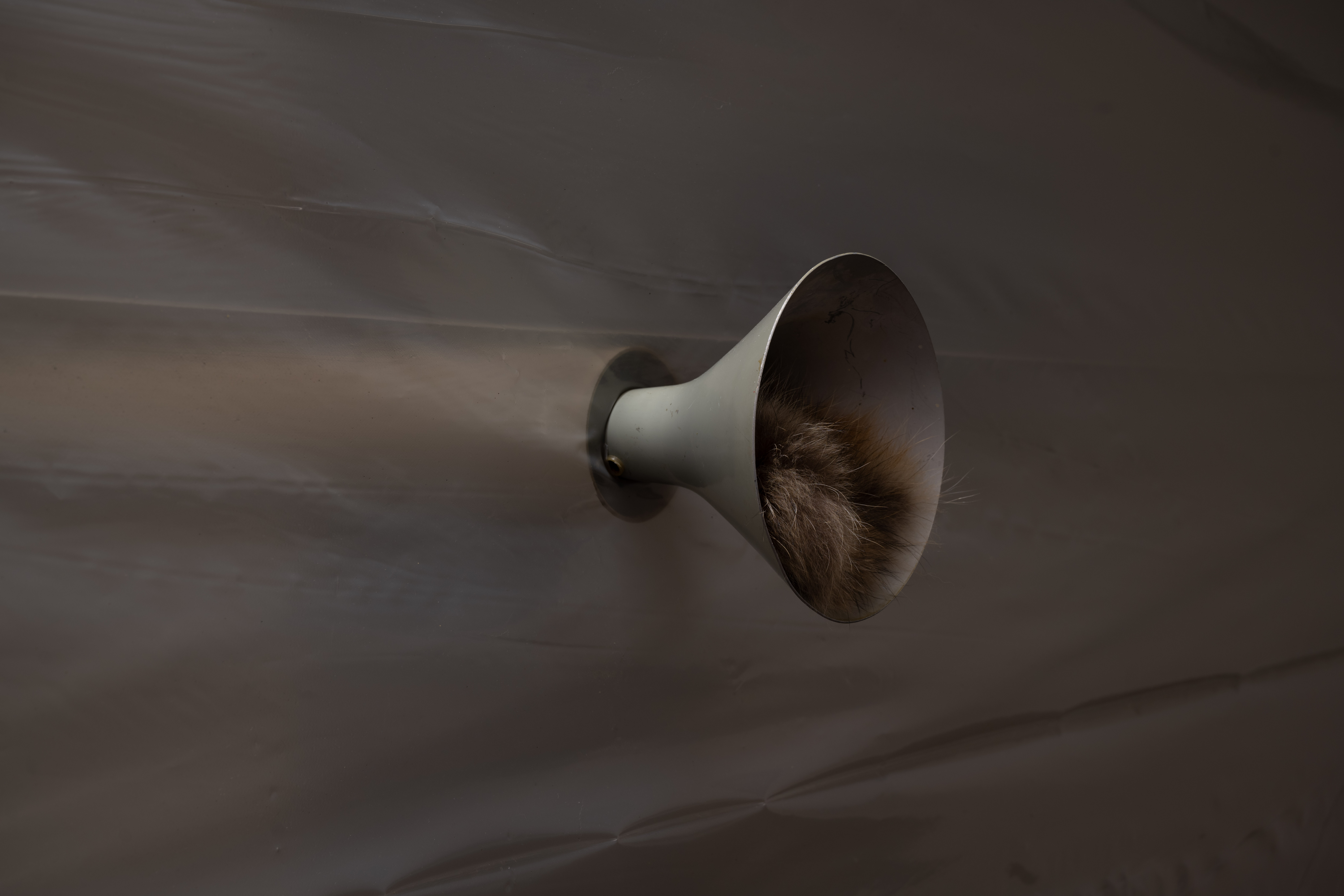
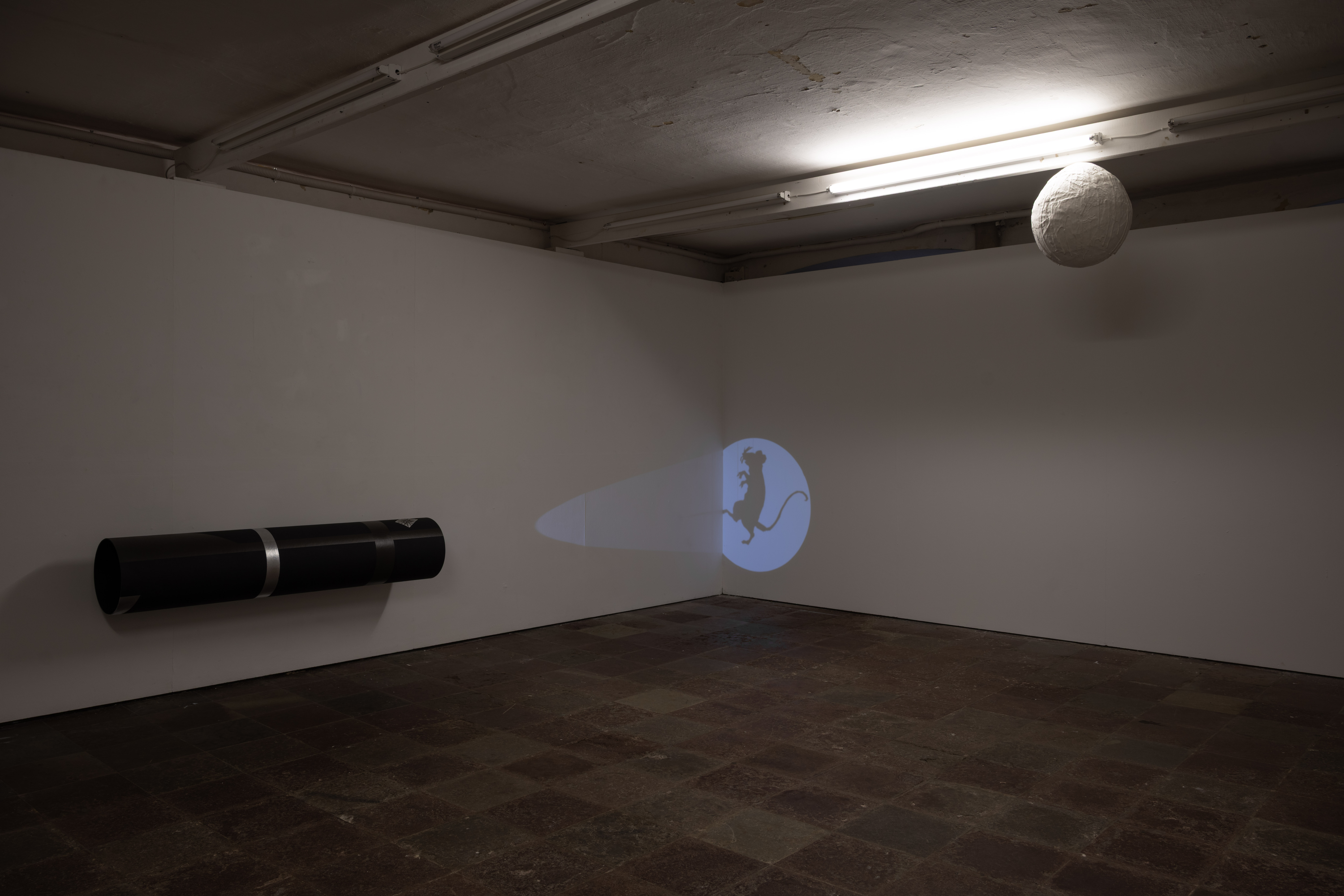
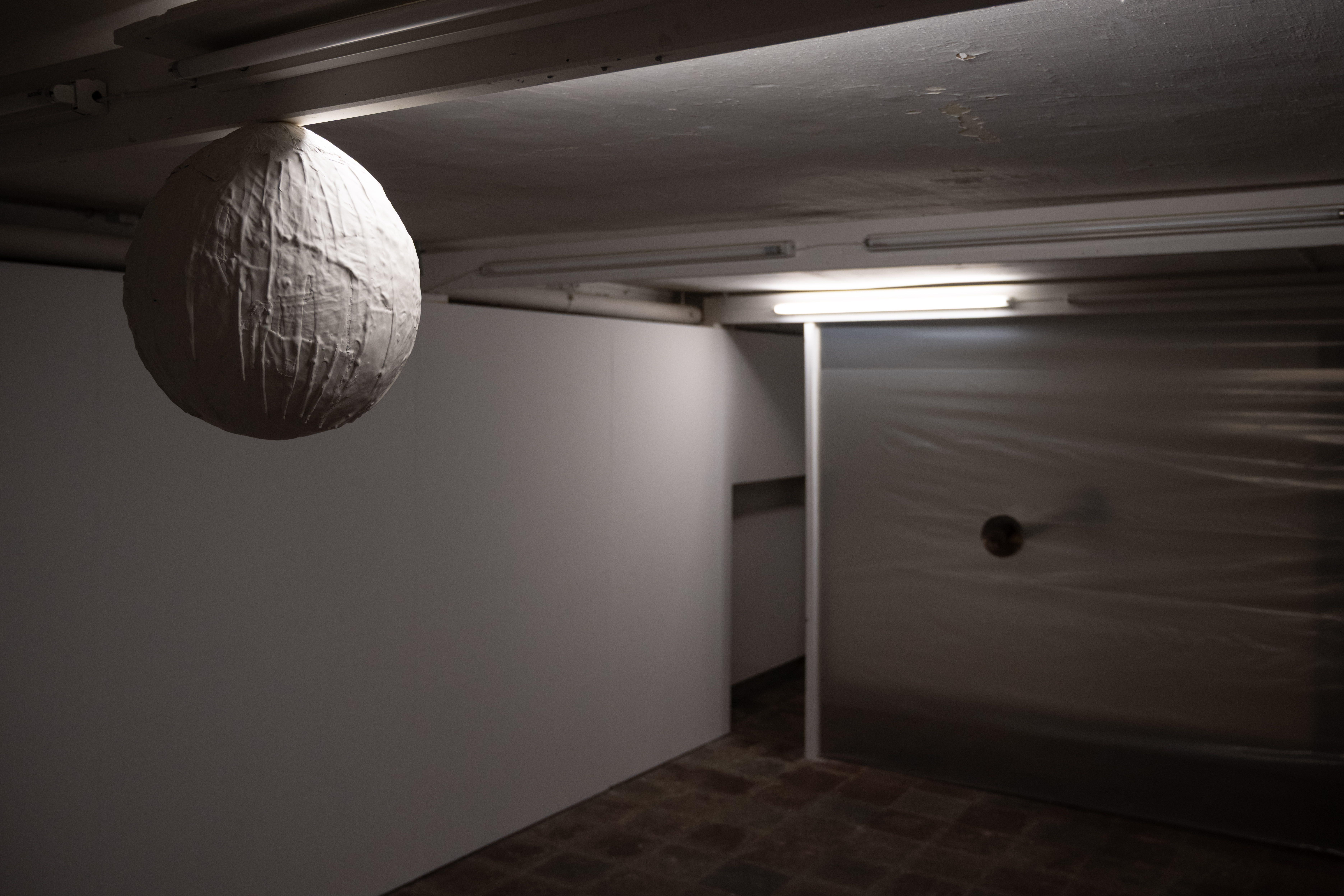
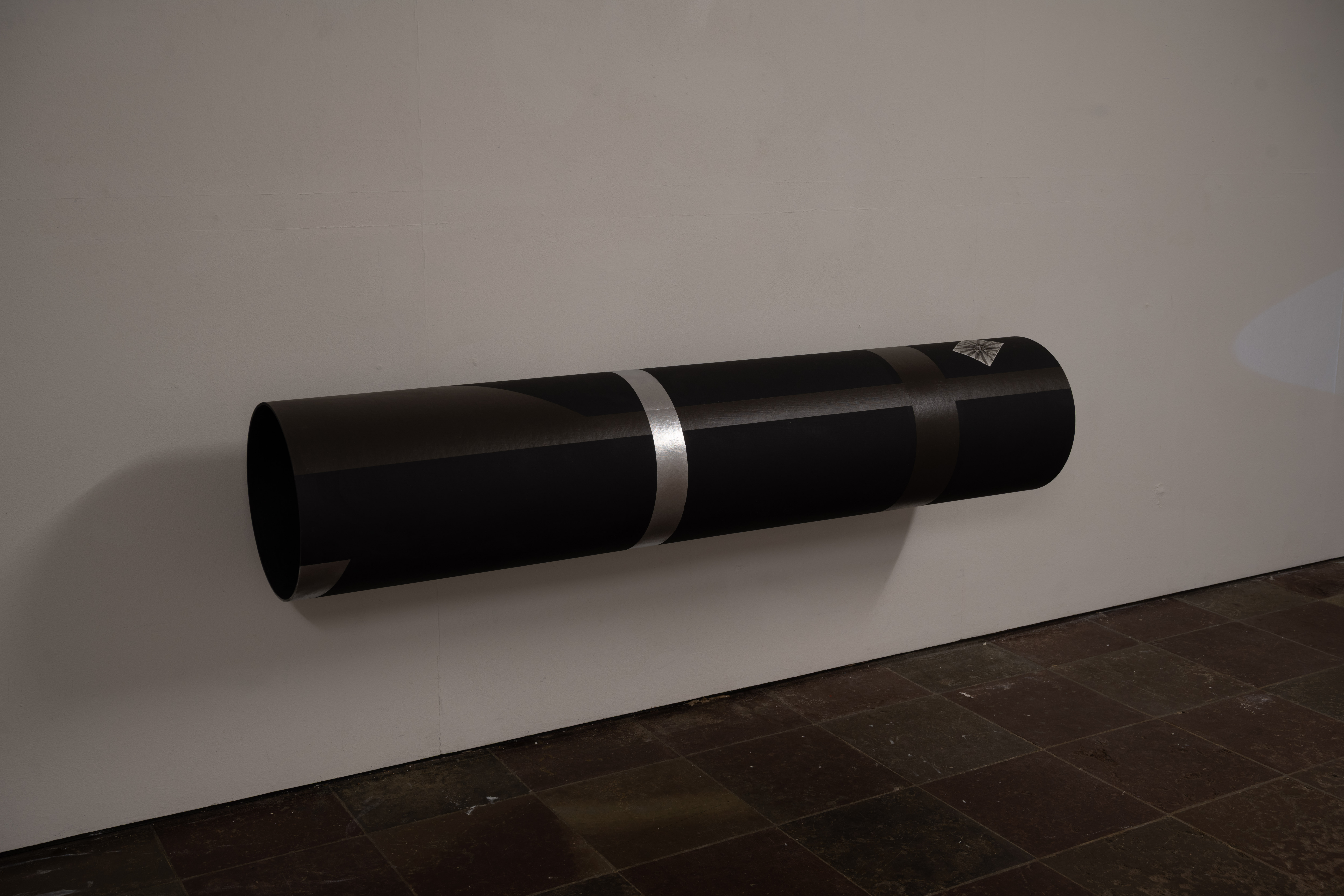
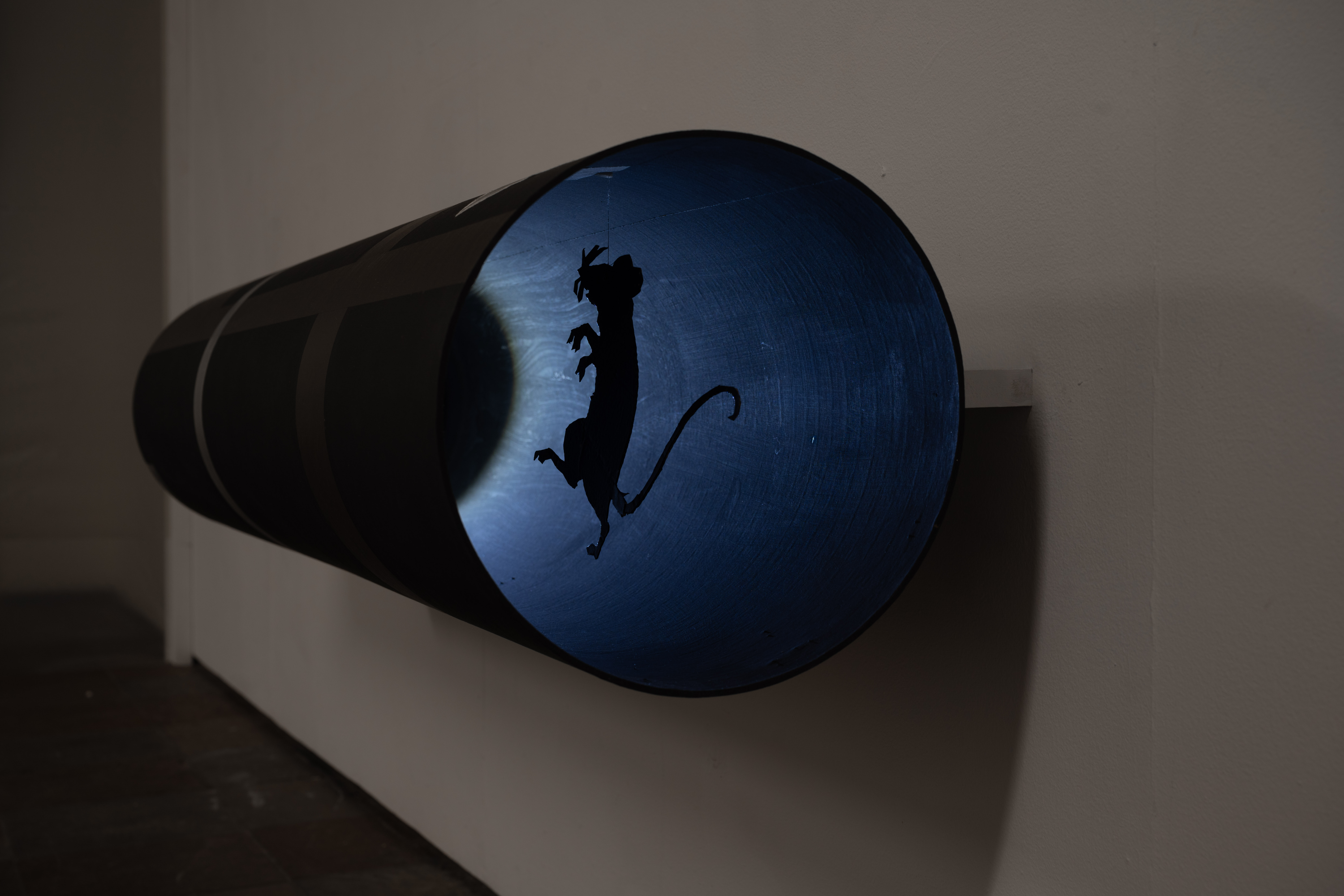
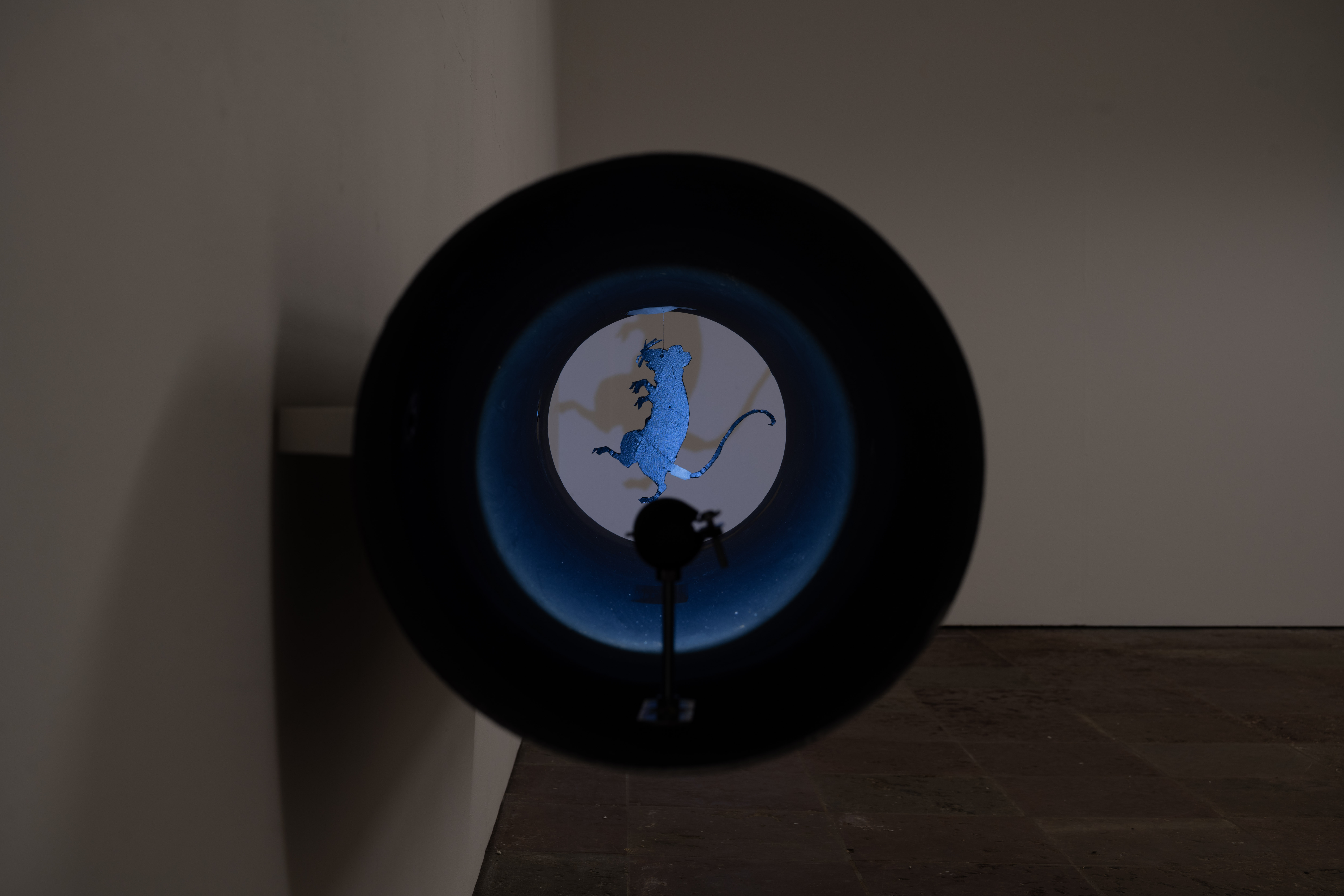
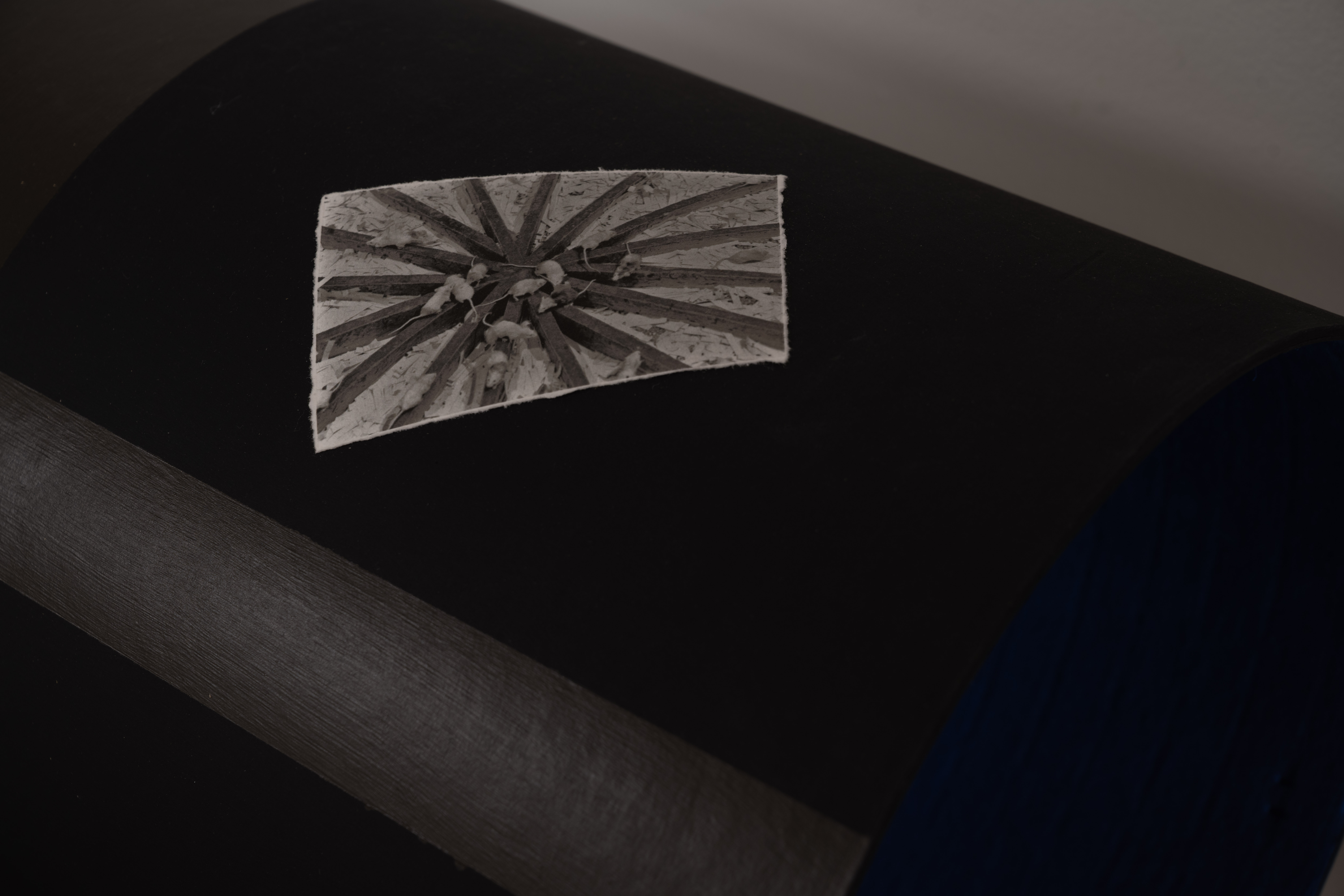
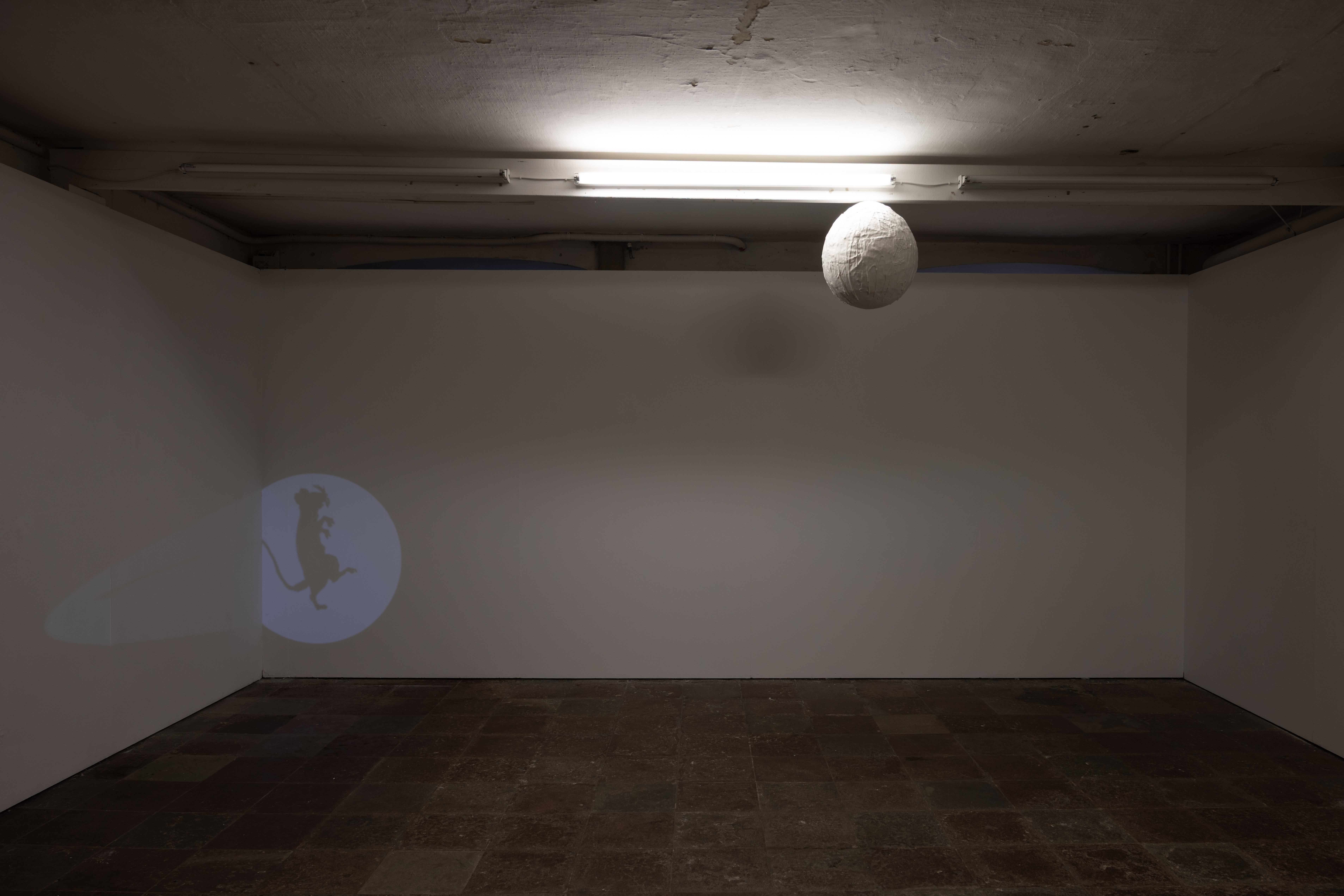
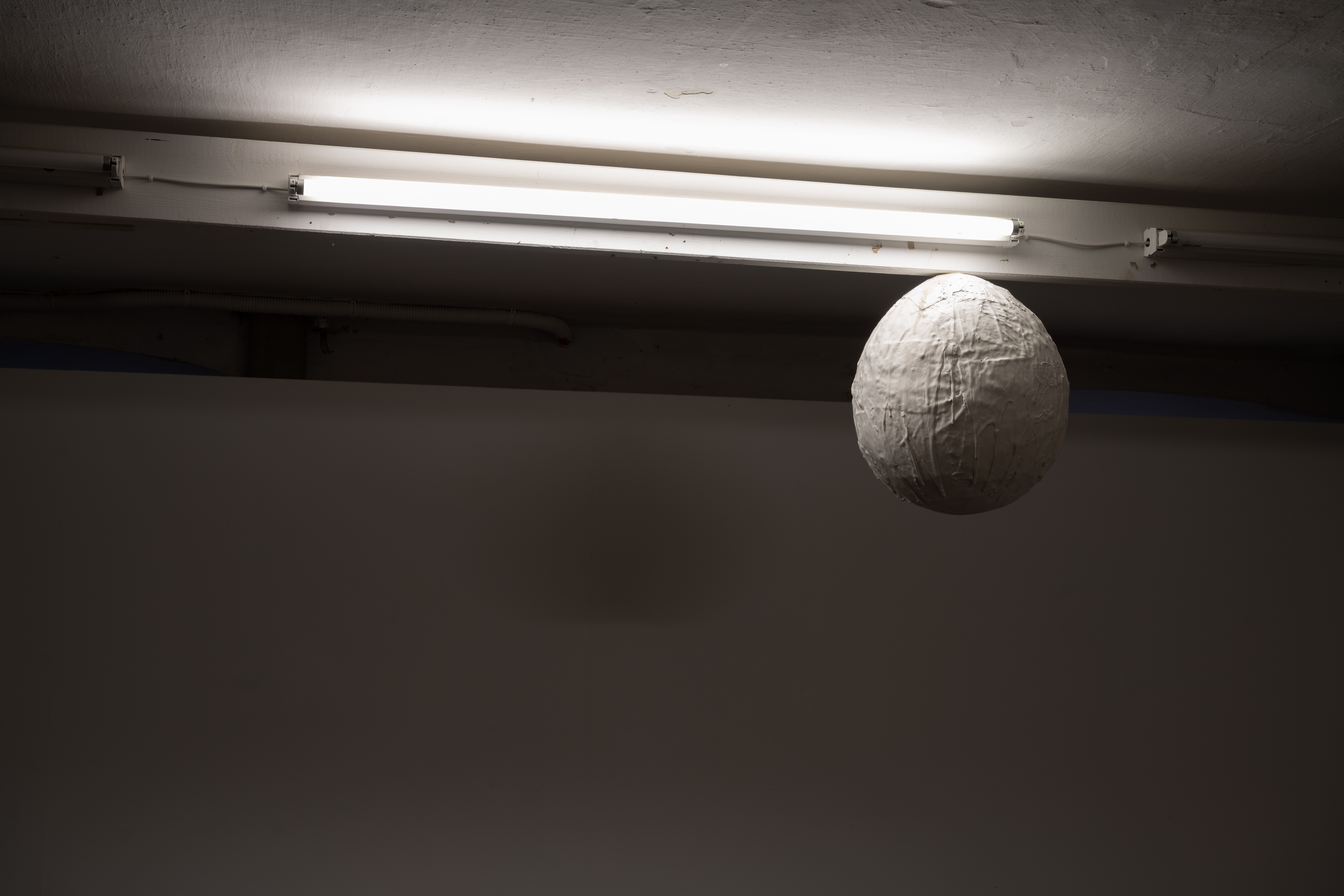
Some months ago I was having a late dinner in the studio kitchen of the sculpture school when I noticed small mouse making its way down the human-sized staircase. What struck me was that the place it came from is the highest point of the ground floor, reachable only by a few steps that, from the outside, seem impossible for a mouse to overcome. Intrigued, I set up a night-vision camera in the days that followed and scattered breadcrumbs as bait. The mouse returned, and the recordings revealed its remarkable climbing abilities. I began constructing passages from cardboard tubes, enabling it to traverse the architectural barriers of the school.
The exhibition translates this encounter into spatial terms. A translucent plastic film divides the room vertically, transforming the entrance into a narrow passage that directs visitors along an altered route through the architecture, echoing the pathways once traced by the mouse. Other elements extend this narrative across the space, shifting the conditions and atmospheres of the Ping Pong basement, and presenting a site that draws attention to the interplay of above and below, the seen and unseen.
The exhibition translates this encounter into spatial terms. A translucent plastic film divides the room vertically, transforming the entrance into a narrow passage that directs visitors along an altered route through the architecture, echoing the pathways once traced by the mouse. Other elements extend this narrative across the space, shifting the conditions and atmospheres of the Ping Pong basement, and presenting a site that draws attention to the interplay of above and below, the seen and unseen.
“A trap well laid” at G10 space Darmstadt 11.04 - 23.05.2025





The exhibition A Trap Well Laid by Luis Maria Sulzmann brings together various objects used in beekeeping businesses. These are tools and equipment for honey production that have been perfected over centuries to maximize yields. This capitalist and industrial approach views nature and living creatures as quantifiable resources, whose enhanced performance is expected to generate predictable growth and profit. Through the absence of insects, G10 Projektraum becomes a resonating chamber for the buzzing and eager activity of bees. Sulzmann questions the common human perspective—the anthropocentric point of view—and opens new fields of vision concerning an endangered group of insects.
The works presented in G10 are reminiscent of readymades—industrially manufactured objects removed from their original context and presented as artworks without modification. A beehive modeled by Sulzmann is based on a historical and scientific 19th-century design. This model revolutionized beekeeping with its modular structure, allowing beekeepers to intervene directly and observe the honeycombs. It is surprising that this device is still in use today—it seems to signal a return to older practices. While contemporary technologies are evolving so rapidly it’s almost impossible to keep up, time appears to have stood still for the beehive; its form remains pre-industrial and pre-technological.
Sulzmann's presentation appears objective. It is reminiscent of scientific textbooks, which promote a rational understanding of broader contexts while allowing for emotional detachment. However, upon closer inspection, unequal power dynamics are exposed: humans exploit nature as a resource for economic gain, repeatedly undermining the fundamental principles of life.
The works presented in G10 are reminiscent of readymades—industrially manufactured objects removed from their original context and presented as artworks without modification. A beehive modeled by Sulzmann is based on a historical and scientific 19th-century design. This model revolutionized beekeeping with its modular structure, allowing beekeepers to intervene directly and observe the honeycombs. It is surprising that this device is still in use today—it seems to signal a return to older practices. While contemporary technologies are evolving so rapidly it’s almost impossible to keep up, time appears to have stood still for the beehive; its form remains pre-industrial and pre-technological.
Sulzmann's presentation appears objective. It is reminiscent of scientific textbooks, which promote a rational understanding of broader contexts while allowing for emotional detachment. However, upon closer inspection, unequal power dynamics are exposed: humans exploit nature as a resource for economic gain, repeatedly undermining the fundamental principles of life.
“Cartridges”, Project room of the Royal Academy of Fine Arts Copenhagen 2025

